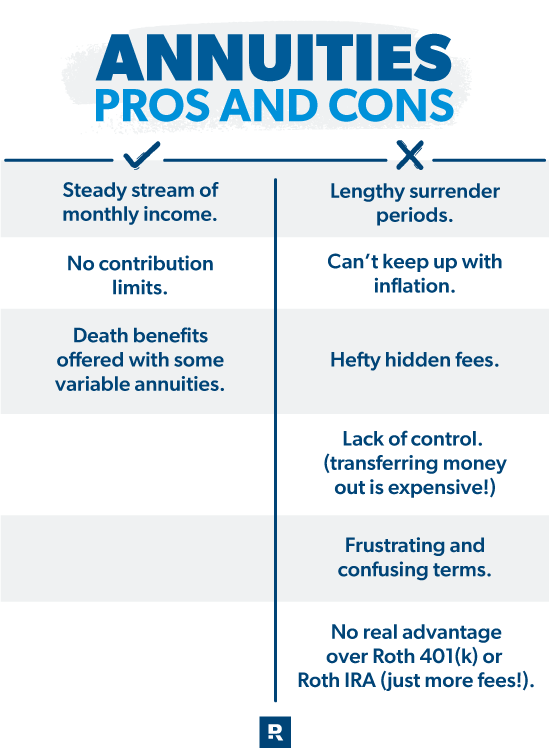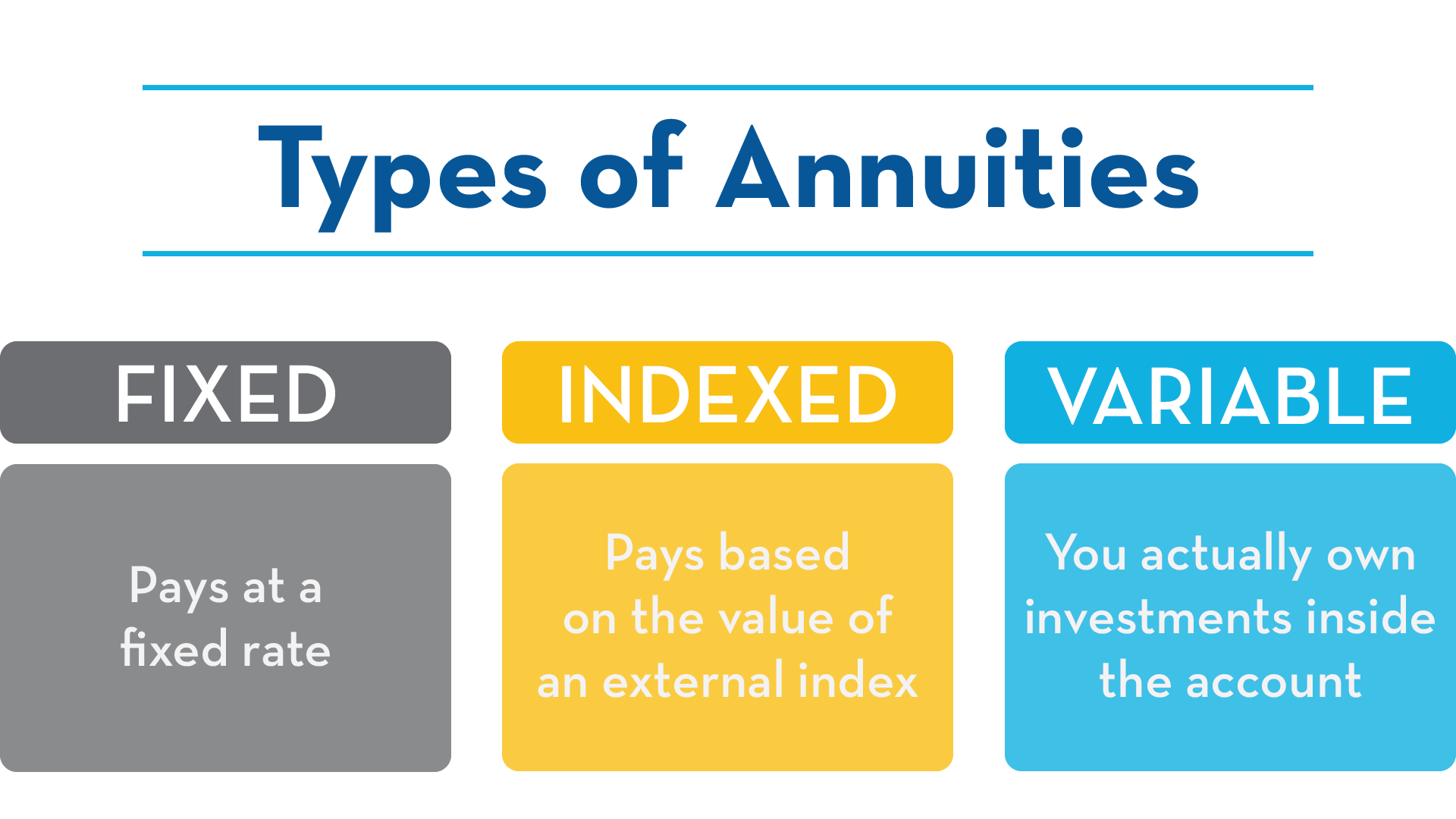All Categories
Featured
Table of Contents
Equally as with a repaired annuity, the proprietor of a variable annuity pays an insurance firm a lump amount or collection of repayments in exchange for the assurance of a series of future payments in return. As stated over, while a repaired annuity grows at an ensured, constant rate, a variable annuity grows at a variable rate that depends upon the efficiency of the underlying financial investments, called sub-accounts.

During the accumulation phase, properties invested in variable annuity sub-accounts grow on a tax-deferred basis and are strained only when the contract proprietor withdraws those earnings from the account. After the build-up stage comes the revenue stage. In time, variable annuity assets need to theoretically boost in worth up until the contract proprietor chooses she or he would such as to begin taking out money from the account.
The most substantial issue that variable annuities typically present is high cost. Variable annuities have several layers of costs and expenses that can, in aggregate, develop a drag of approximately 3-4% of the contract's value each year. Below are one of the most usual charges connected with variable annuities. This expenditure makes up the insurer for the threat that it thinks under the terms of the agreement.
Understanding Indexed Annuity Vs Fixed Annuity A Comprehensive Guide to Investment Choices What Is Deferred Annuity Vs Variable Annuity? Pros and Cons of Various Financial Options Why Choosing the Right Financial Strategy Matters for Retirement Planning Fixed Annuity Vs Variable Annuity: Explained in Detail Key Differences Between Fixed Annuity Vs Equity-linked Variable Annuity Understanding the Key Features of Retirement Income Fixed Vs Variable Annuity Who Should Consider Variable Vs Fixed Annuity? Tips for Choosing Variable Vs Fixed Annuities FAQs About Planning Your Financial Future Common Mistakes to Avoid When Planning Your Retirement Financial Planning Simplified: Understanding Pros And Cons Of Fixed Annuity And Variable Annuity A Beginner’s Guide to Variable Vs Fixed Annuities A Closer Look at Fixed Indexed Annuity Vs Market-variable Annuity
M&E cost costs are determined as a percentage of the contract worth Annuity companies hand down recordkeeping and other management costs to the agreement owner. This can be in the type of a level yearly cost or a portion of the agreement value. Administrative costs may be consisted of as part of the M&E threat charge or may be assessed independently.
These costs can range from 0.1% for passive funds to 1.5% or more for actively taken care of funds. Annuity contracts can be customized in a number of ways to serve the details demands of the contract owner. Some usual variable annuity bikers include ensured minimum buildup benefit (GMAB), guaranteed minimum withdrawal benefit (GMWB), and guaranteed minimum income advantage (GMIB).

Variable annuity payments supply no such tax deduction. Variable annuities often tend to be very inefficient lorries for passing wide range to the future generation because they do not appreciate a cost-basis change when the original contract proprietor dies. When the owner of a taxed investment account passes away, the expense bases of the investments kept in the account are changed to reflect the marketplace rates of those investments at the time of the proprietor's fatality.
Highlighting Indexed Annuity Vs Fixed Annuity A Comprehensive Guide to Investment Choices Defining Variable Annuity Vs Fixed Indexed Annuity Features of Fixed Vs Variable Annuities Why Fixed Annuity Vs Equity-linked Variable Annuity Is Worth Considering How to Compare Different Investment Plans: A Complete Overview Key Differences Between Different Financial Strategies Understanding the Risks of Tax Benefits Of Fixed Vs Variable Annuities Who Should Consider Strategic Financial Planning? Tips for Choosing the Best Investment Strategy FAQs About Tax Benefits Of Fixed Vs Variable Annuities Common Mistakes to Avoid When Planning Your Retirement Financial Planning Simplified: Understanding Your Options A Beginner’s Guide to Variable Annuity Vs Fixed Annuity A Closer Look at Variable Vs Fixed Annuity
Such is not the situation with variable annuities. Investments held within a variable annuity do not receive a cost-basis change when the initial owner of the annuity dies.
One significant problem associated with variable annuities is the possibility for conflicts of interest that may feed on the component of annuity salespeople. Unlike a financial consultant, who has a fiduciary responsibility to make investment decisions that profit the client, an insurance policy broker has no such fiduciary obligation. Annuity sales are extremely profitable for the insurance coverage specialists that market them due to high ahead of time sales payments.

Lots of variable annuity contracts contain language which positions a cap on the percentage of gain that can be experienced by certain sub-accounts. These caps prevent the annuity owner from fully getting involved in a part of gains that might or else be appreciated in years in which markets generate significant returns. From an outsider's point of view, presumably that capitalists are trading a cap on financial investment returns for the aforementioned ensured flooring on financial investment returns.
As noted over, give up charges can significantly restrict an annuity owner's ability to relocate assets out of an annuity in the very early years of the agreement. Further, while the majority of variable annuities allow agreement owners to withdraw a defined quantity throughout the accumulation stage, withdrawals yet quantity usually cause a company-imposed charge.
Withdrawals made from a set rate of interest investment alternative could likewise experience a "market price modification" or MVA. An MVA readjusts the value of the withdrawal to mirror any kind of changes in rate of interest from the time that the cash was purchased the fixed-rate alternative to the time that it was taken out.

Frequently, even the salesmen who sell them do not completely recognize exactly how they function, and so salespeople sometimes victimize a purchaser's emotions to market variable annuities rather than the benefits and suitability of the products themselves. We think that financiers ought to completely recognize what they own and just how much they are paying to possess it.
Highlighting the Key Features of Long-Term Investments Everything You Need to Know About Fixed Index Annuity Vs Variable Annuities Breaking Down the Basics of Investment Plans Advantages and Disadvantages of Fixed Interest Annuity Vs Variable Investment Annuity Why What Is A Variable Annuity Vs A Fixed Annuity Matters for Retirement Planning Fixed Annuity Vs Equity-linked Variable Annuity: Simplified Key Differences Between Different Financial Strategies Understanding the Rewards of Fixed Annuity Vs Variable Annuity Who Should Consider Tax Benefits Of Fixed Vs Variable Annuities? Tips for Choosing the Best Investment Strategy FAQs About Deferred Annuity Vs Variable Annuity Common Mistakes to Avoid When Planning Your Retirement Financial Planning Simplified: Understanding Your Options A Beginner’s Guide to Fixed Interest Annuity Vs Variable Investment Annuity A Closer Look at How to Build a Retirement Plan
The same can not be said for variable annuity properties held in fixed-rate investments. These properties legally come from the insurance provider and would therefore go to risk if the firm were to fail. Any kind of assurances that the insurance business has agreed to give, such as an ensured minimum income advantage, would certainly be in inquiry in the event of a business failing.
Potential buyers of variable annuities ought to understand and think about the economic condition of the issuing insurance coverage company before entering into an annuity agreement. While the benefits and disadvantages of various types of annuities can be questioned, the genuine problem bordering annuities is that of suitability.
Besides, as the saying goes: "Caveat emptor!" This write-up is prepared by Pekin Hardy Strauss, Inc. Differences between fixed and variable annuities. ("Pekin Hardy," dba Pekin Hardy Strauss Riches Monitoring) for informational objectives only and is not intended as an offer or solicitation for business. The details and information in this write-up does not constitute legal, tax obligation, bookkeeping, financial investment, or various other specialist guidance
Table of Contents
Latest Posts
Breaking Down What Is Variable Annuity Vs Fixed Annuity A Closer Look at Fixed Vs Variable Annuity Defining the Right Financial Strategy Features of Fixed Index Annuity Vs Variable Annuities Why Choos
Understanding Financial Strategies A Closer Look at Pros And Cons Of Fixed Annuity And Variable Annuity Breaking Down the Basics of Investment Plans Advantages and Disadvantages of Fixed Annuity Vs Eq
Understanding Fixed Indexed Annuity Vs Market-variable Annuity Key Insights on Your Financial Future Breaking Down the Basics of Investment Plans Pros and Cons of Pros And Cons Of Fixed Annuity And Va
More
Latest Posts